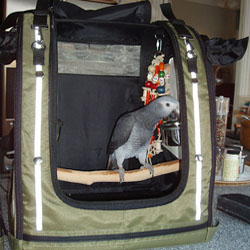 Are you planning to take a trip with your bird? If so, your trip will go much more smoothly if you take the time to do some advance planning. Even short trips to the office or the vet's office require some preparation to ensure that your bird travels safely.
Are you planning to take a trip with your bird? If so, your trip will go much more smoothly if you take the time to do some advance planning. Even short trips to the office or the vet's office require some preparation to ensure that your bird travels safely.
Due to their innate curiosity, most birds enjoy traveling and, indeed, the experience can be very intellectually and socially stimulating for them. However, some birds may not make suitable traveling companions if they are easily over-stressed by disruptions to their routine or if they suffer from motion sickness. The first thing to consider when deciding whether to take your bird on a trip is how emotionally and physically well suited they are to travel.
To minimize your bird's stress, it is important to take steps to maintain your parrot's daily routines to the extent possible during travel. The more you do to ensure they have a consistent diet, similar feeding schedules, sleeping hours, opportunities for bathing and interactive, social time with you, the more secure they will feel and the better they will be able to adapt.
The degree of advance planning and preparation required varies depending on the mode of travel, the length of the trip, the location to which you are traveling and the time of year.
Regardless, of your mode of travel the following always holds true:
- Take your bird to the vet for a checkup. Traveling can be very stressful to your bird and if they are already ill then their health could be further impaired by the stress.
- Don't take your bird outside unless it is in a travel cage, it is wearing an avian harness or it's wings are properly clipped.
- Check to make sure pets are allowed wherever you plan to stay.
- Know the regulations of each state or country you plan to visit. For example, Quaker Parrots are prohibited in several U.S. States.
- The USDA maintains a helpful pet travel page with links you can follow to help in researching domestic and international pet travel regulations.
- When traveling from state to state check the U.S. State and Territory Animal Import Regulations for "...the latest regulations on interstate movement of animals".
- For international travel see the International Regulations for Animals listed by country.
- The Animal Welfare Act requires that all birds traveling across state lines have a vet issued health certificate dated within 10 days of the date of departure.
- If traveling to another country, make sure you have the proper documentation and health certifications before attempting to travel. Be sure to find out whether there are quarantine requirements at your destination.
- Research the availability of avian vets in the area where you will be traveling and take their contact information with you.
- Check the weather projections, if it looks risky your bird may be better off staying home.
What to Pack
- Take enough food and bottled water with you for the entire trip. You may not be able to buy your bird's favorite pellets and treats wherever you are headed. Supplement his diet with fresh fruits and vegetables purchased locally.
- Cleaning supplies
- Cage/carrier cover
- Mister
- First Aid Kit
- Vet contact information
- Health Certificate
Choosing and Outfitting a Travel Carrier
Security and comfort are the two prime considerations when choosing a travel carrier. If you are planning to travel by air then the travel carrier must be airline-approved and it must meet dimensional requirements if you plan to travel with your bird in the cabin. Some of the key questions to ask in choosing a carrier are:
- Is the carrier sturdy enough to hold up to the jostling and bumps (not to mention the beak) it will be subjected to during transport?
- Is the handle strong enough for carrying and securing with a seatbelt when traveling by car?
- Is the door latch secure enough to prevent your bird from forcing it open?
- Is the carrier big enough to allow your bird to perch comfortably and turn around.
- Can the carrier be adapted easily to hold a perch ? Be sure to use a perch with a good gripping surface and to mount the perch securely across the width of the carrier.
- Can the carrier accommodate food and water dishes securely?
- Does the carrier have good ventilation?
- Will the carrier be easy to clean?
To make the carrier more comfortable and secure for your bird during a trip:
- Make sure to provide some of his favorite treats.
- Include some familiar hand held, destructible toys or soft preening toys.
- Line the bottom of the carrier with a soft, absorbent towel.
- If your bird is water bottle trained this will minimize the risk of spills and a damp carrier. If using a water dish, don't fill it as deep as usual.
- Provide some high water content fruits and veggies to eat to help prevent dehydration.
- Be prepared to cover the container if your bird is easily frightened or subject to motion sickness.
Road Trips
Road trips can be a load of fun and taking your parrot with you can make it even more fun. Before heading out on a long road trip you should acclimate your bird to traveling by taking him in his carrier on short trips around town. Taking your bird for frequent rides in a car will desensitize your parrot making travel less stressful. There are several common sense rules that should always be followed when traveling with your bird in a car:
- Always travel with your bird in a carrier. A loose parrot can quickly get itself into trouble and be very distracting to the driver. Remaining in the container will be less stressful for the bird and less dangerous for all parties.
- Traveling in a carrier will also prevent escape through an open window or door.
- Secure your bird's travel cage/carrier with a seat belt.
- If your car is equipped with front seat airbags always travel with your bird in the back seat because the air bag could cause injury if deployed.
- When making stops never leave your bird unattended in a parked car on a warm or hot day. Even with the windows cracked the temperature inside the car can rise to deadly levels within minutes.
- Don't place your bird in direct sunlight. Use a cover or sun shades.
- Talking to your bird in reassuring tones throughout the trip will help reduce his stress.
- If your bird suffers from motion sickness then keep him covered during the trip to reduce visual stimuli. It has also been reported that fresh ginger slices added to their food and water before the trip will help ease nausea.
- Be aware that birds can become easily scared by simple things we take for granted such as a big colorful truck passing by, tunnels, overpasses, windshield wipers and car washes.
- Remove any heavy hanging toys that could cause injury by swinging into your bird.
- Stop every few hours to check on your bird and give him a few minutes of attention. Many birds tend not to eat or drink when the car is moving so you should take this time to encourage him to do both.
- In cold weather, warm up the car first before placing your bird in the car. Conversely, in hot weather make sure to cool the car first.
- Adjust the air conditioning or heat to a comfortable level and don't place your bird directly in front of the air conditioning or heating vent.
Air Travel
Air travel with your bird presents some unique challenges. Never assume you can just show up at the airport and sneak little tweety into the cabin with you. All airlines now charge a fee for a pet to fly, they must have a boarding pass to get through security and there are other regulations which must be met in regards to health certification. The best way to ensure your bird's safety is to ask a lot of questions and to be sure to get answers that sound right before you book travel.
The most important thing to do, if you plan to travel by air, is to investigate the airlines rules and regulations far in advance of making reservations. Some airlines do not accept birds on their flights at all and others restrict the types of birds allowed. Reservations for air travel should be made as far in advance as possible, as the airlines that do accept birds place restrictions on the number of pets allowed to fly in the cabin to as few as one or two.
Please note that advance arrangements do not guarantee that your pet will travel on a specific flight. Airlines reserve the right to refuse to transport a pet for reasons such as illness, poor kenneling or extreme temperatures at origin, transfer or destination airports.
Considerations when Booking Air Travel
- Book a direct and non-stop flight if at all possible.
- Request a window or middle seat so your bird is not startled by aisle traffic.
- Your pet will count as a "carry-on" item so pack accordingly.
- Avoid traveling in inclement weather that could cause significant delays or flight cancellations (i.e., hurricanes, snowstorms).
- Avoid traveling during times of threatened airline labor strikes
- Avoid traveling on Holidays as you may experience delays and cancelled flights.
- Weekday flights are usually less hectic than weekend flights.
- When traveling in the summer, book only early morning or late evening flights when temperatures are cooler. In the winter, mid-day flights are the warmest. Note that carriers reserve the right to embargo pet travel during extreme temperature conditions.
- Reconfirm your plans 24 to 48 hours before flight departure, especially during peak flying times.
Getting Through Security
The Transportation Security Administration (TSA) is the governing body responsible for guidelines utilized by airports for the screening of all pets and their kennels, whether transported in the passenger cabin or via air cargo.
- Have security personnel hand check the carrier and your parrot companion as the X-ray screening machines are so powerful that they will cause harm to your bird.
- You may be required to remove the bird from his carrier so make sure he is clipped and/or outfitted with a flight harness and leash.
- Do not take your bird out of its carrier inside the airport unless TSA personnel ask you to do so.
- You will need boarding pass for your bird.0
- Birds flying across state lines need a health certificate obtained from your veterinarian.
- For easy inspection, maintain a clean, clutter free carrier.
Traveling With Your Bird in the Cabin
- Your bird must stay in the carrier at all times during flight.
- If your bird is prone to uncontrolled screaming, be aware he may be removed to the cargo hold. Be prepared to cover the carrier to keep your bird quiet.
- The carrier must fit under the seat in front of you. The under seat dimensions vary by airline, class of travel and aircraft model so you will need to check whether your carrier will meet these specifications prior to arriving at the airport.
Shipping Your Bird as Cargo
Another alternative to carrying your bird in the passenger cabin is having them ride in the cargo hold. Birds are placed into a pressurized part of the cargo hold, not with the luggage. Two alternatives for cargo travel are available. The first is more expensive. Birds travel from “counter to counter” and are available for pick up immediately after landing from the inside counter. The second options for the birds are to be shipped air cargo. You must call the airline's air cargo office 24 to 48 hours before your flight. The birds must be dropped off and picked up at the air cargo office at the airport. Note that airlines will not ship live animals if the temperature is above 85 or below 45 degrees Fahrenheit.
The following guidelines are recommended:
- Carriers must be sturdy and meet requirements of the airline.
- A two day supply of food and water is recommended in case of delays.
- Label the carrier “Live Animal” and indicate the upright position.
- Label the container with your name, your bird's name, contact information and flight information.
- Tape a copy of the health certificate to the container.
International Shipping
There are many restrictions on shipping birds internationally since 9/11 and the panic surrounding the avian flu. Start planning months in advance. Check with the country of your destination to find out what permits are needed. Research what the requirements are for the length of stay, space availability, as well as other necessities of quarantine. Some species are considered endangered and require additional permitting if allowed to travel.
Bus and Train Travel
At this time, neither Amtrak or Greyhound allow pets onboard at any time with the exception of trained service animals.
Hotel Tips
More and more hotels and motels are becoming pet friendly and there are many internet sites that are geared to helping people locate those establishments. Always make sure that you investigate their policies before you travel as many charge extra fees or require cleaning deposits when you travel with a pet. Other helpful tips include:
- Always request a non-smoking room.
- Don't leave your bird alone in the hotel room or at a minimum hang the "Do Not Disturb" sign on your door to keep hotel staff from entering when you are gone.
- Make sure the hotel cleaning staff don't use air fresheners or cleaning chemicals in your room as these may harm your bird. Request linen service only.
- Ask for a room with a refrigerator so you can keep your bird's cooked food and fruits and veggies fresh.
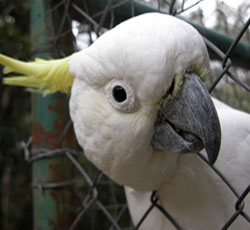 When considering the purchase of a cage for your bird, safety is a prime consideration. The following categories provide an overview of the key safety issues you must consider and investigate:
When considering the purchase of a cage for your bird, safety is a prime consideration. The following categories provide an overview of the key safety issues you must consider and investigate: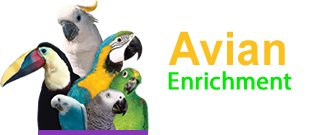

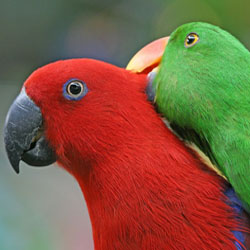 Many standard household cleaners contain very harsh chemicals and are potentially deadly to our birds. Birds are very sensitive to chemicals and fumes, therefore, it is very important to relocate your bird to another part of the house when using chemical cleaners. There are many stories on the internet of birds who have died or have become ill as the result of exposure to the chemicals and fumes from carpet, furniture, bathroom, glass and oven cleaners. Several products have been linked to bird deaths (Carpet Fresh, Fabreze, Scotchguard, Arm & Hammer Pet Fresh just to name a few).
Many standard household cleaners contain very harsh chemicals and are potentially deadly to our birds. Birds are very sensitive to chemicals and fumes, therefore, it is very important to relocate your bird to another part of the house when using chemical cleaners. There are many stories on the internet of birds who have died or have become ill as the result of exposure to the chemicals and fumes from carpet, furniture, bathroom, glass and oven cleaners. Several products have been linked to bird deaths (Carpet Fresh, Fabreze, Scotchguard, Arm & Hammer Pet Fresh just to name a few).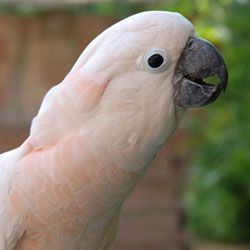 Our home is supposed to be our safe haven and this should hold true for our parrots too! The reality is that birds have to face many dangers in our "unnatural" environment. Hazards lurk around every corner of our homes and it is our responsibility to do room by room "safety inspections" and remove any and all hazards. Parrots don't have the requisite knowledge and experience to realize when they are putting themselves in harm's way. They are very adept at getting into danger due to the combination of their curious nature, mobility and powerful beaks.
Our home is supposed to be our safe haven and this should hold true for our parrots too! The reality is that birds have to face many dangers in our "unnatural" environment. Hazards lurk around every corner of our homes and it is our responsibility to do room by room "safety inspections" and remove any and all hazards. Parrots don't have the requisite knowledge and experience to realize when they are putting themselves in harm's way. They are very adept at getting into danger due to the combination of their curious nature, mobility and powerful beaks.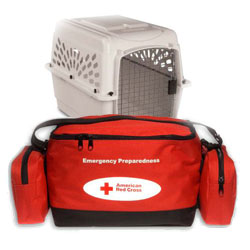 We all have the pictures of Hurricane Katrina's aftermath fresh in our minds and we've heard many heartbreaking stories of pets that had to be left behind. Many people did not evacuate because they could not take their pets with them to the shelters. The end result was the loss of many human lives as well as those of their animal companions. Many more animals were displaced and have yet to be reunited with their owners.
We all have the pictures of Hurricane Katrina's aftermath fresh in our minds and we've heard many heartbreaking stories of pets that had to be left behind. Many people did not evacuate because they could not take their pets with them to the shelters. The end result was the loss of many human lives as well as those of their animal companions. Many more animals were displaced and have yet to be reunited with their owners.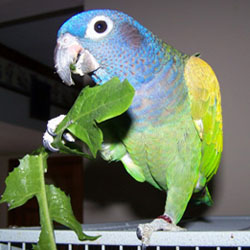 OK, so we've made the resolution to feed our feathered friends a well rounded, nutritional diet. What else do we have to worry about?
OK, so we've made the resolution to feed our feathered friends a well rounded, nutritional diet. What else do we have to worry about? With the Christmas, Hanukkah and New Year's holidays upon us we are all busy planning our family gatherings, gift giving and decorations. The season brings with it unique hazards that we all need to be mindful of so that we can assure that our feathered family members are protected:
With the Christmas, Hanukkah and New Year's holidays upon us we are all busy planning our family gatherings, gift giving and decorations. The season brings with it unique hazards that we all need to be mindful of so that we can assure that our feathered family members are protected: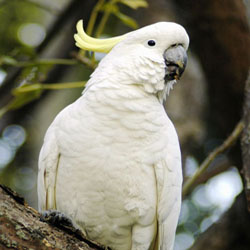 Time spent outdoors can be a very mentally, physically and instinctually stimulating experience for your bird. For optimal safety, this should occur while in an outdoor cage or aviary.
Time spent outdoors can be a very mentally, physically and instinctually stimulating experience for your bird. For optimal safety, this should occur while in an outdoor cage or aviary.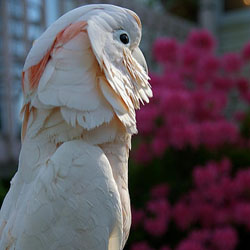 In the wild, bird's face many challenges in ensuring their day to day survival. However, bird's face many more challenges surviving in our "unnatural environment." They have to navigate and survive many household hazards that we often don't even think twice about.
In the wild, bird's face many challenges in ensuring their day to day survival. However, bird's face many more challenges surviving in our "unnatural environment." They have to navigate and survive many household hazards that we often don't even think twice about. Are you planning to take a trip with your bird? If so, your trip will go much more smoothly if you take the time to do some advance planning. Even short trips to the office or the vet's office require some preparation to ensure that your bird travels safely.
Are you planning to take a trip with your bird? If so, your trip will go much more smoothly if you take the time to do some advance planning. Even short trips to the office or the vet's office require some preparation to ensure that your bird travels safely. 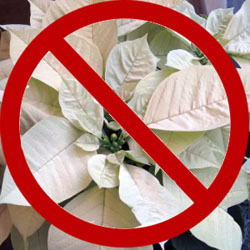 Unknowingly, you may have toxic plants around your household which present a serious danger to your bird. Parrots instinctually enjoy chewing and shredding plants. If you allow your parrot unsupervised access to your home, you should take steps to make sure toxic plants are removed from your home.
Unknowingly, you may have toxic plants around your household which present a serious danger to your bird. Parrots instinctually enjoy chewing and shredding plants. If you allow your parrot unsupervised access to your home, you should take steps to make sure toxic plants are removed from your home. 


